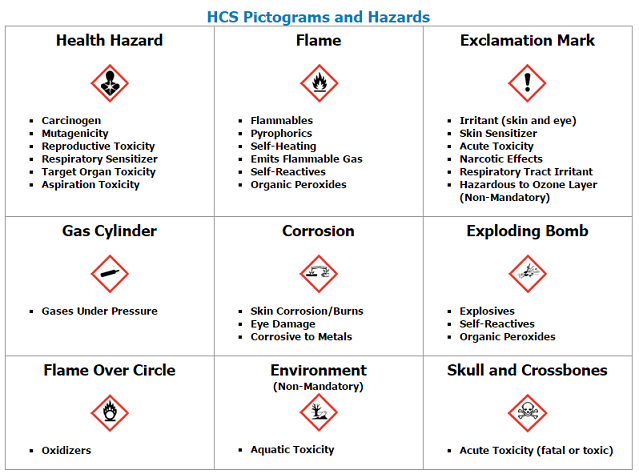Safety Data Sheets (SDS)
Safety Data Sheets (SDSs)
A safety data sheet (SDS) is required for every chemical on campus. SDSs typically ship with the product or are made available for download by the manufacturer. It is the responsibility of the PI or manager to make SDSs availabile and keep them where they can easily be located for reference. Many SDSs can be found using the Safety Data Sheet search function in SciShield.
Listed below are some common chemical suppliers, searchable databases, as well as safety information pages. The following sources provide SDSs that are free to the public.
- Airgas - Safety Data Sheets for gases produced by Airgas
- CCOHS Chemical Hazard Information Database - Comprehensive chemical hazard information resource, including ChemInfo sheets and manufacturer Safety Data Sheets
- Chemical Safety's Online SDS Database - Cloud-based Environmental Management Systems (EMS) with an extensive free SDS database
- Fisher Scientific - Manufacturer’s SDS Search
- Millipore Sigma - High-quality SDSs available online for many chemicals, including common and uncommon laboratory reagents
- Pesticide Safety Data Sheet Sources
- PubChem - Lab Chemical Safety Summaries (LSCC) provide laboratory focused information on chemical hazards. Enter the chemical in the search field, select your choice from the results list, and then select Lab Chemical Safety Sheet.
- Public Health Agency of Canada - Pathogen Safety Data Sheets
If you're unable to locate a SDS, contact EHS for assistance.
Background Information
Safety Data Sheets (SDSs) are developed by chemical manufacturers to provide information for each hazardous chemical they produce.
SDSs are a component of OSHA's Hazard Communication and Laboratory Standards. Both standards state that employees have a right to know what hazards are associated with chemicals used in their workplace.
Information contained on an SDS is divided into 16 sections:
- Identification
- Hazard(s)
- Composition/Information on Ingredients
- First-Aid Measures
- Fire-Fighting Measures
- Accidental Release Measures
- Handling and Storage
- Exposure Control/personal protection
- Physical and Chemical Properties
- Stability and Reactivity
- Toxicological Information
- Ecological Information
- Disposal Considerations
- Transport Information
- Regulatory Information
- Other Information to include date of preparation or last revision
Global Harmonized Communication System - Labeling Info from OSHA

